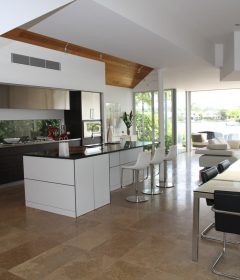Best Tips for Designing Your Kitchen the Japanese Way
So what Japanese-styled designs can you consider for your kitchen interior? What tips can help you make it a reality?
Guidelines to Designing Your Japanese-Styled Kitchen by Write My Essay Today:
- Wood and natural colors
- Most Japanese kitchens consist of pine-like light wood, with clearly visible grain. You have to use wood as the Japanese’s humid climate makes it ideal. Further, ensure you use the timber to make the wooden beams in your kitchen construction as it reinforces the building during typhoons and earthquakes. However, it becomes critical to remember that such a design requires inspection.
- Cabinet screens. You have to consider designing your kitchen cabinets devoid of sliding screens and cabinet handles. Most Japanese cabinets have the old-fashioned Shonji screens made from bamboo frames and washi paper. The space-saving cabinets prove space-efficient and affordable, besides also coming very lightweight.
- Integrated living. Most Japanese kitchens integrate living since their culture features time-consuming dishes when it comes to their preparation. Such a plan allows the cook to socialize with the rest of the family as they continue cooking. Therefore, consider the open-layout kitchen when designing your kitchen with a Japanese theme.
- Tiny kitchen and tools. Most Japanese kitchens come tiny because of the small houses that characterize Japanese building culture. It arises from their culture of separating their home and social life, that consequently, eliminates the need to entertain in the kitchen. The small nature of these kitchens require tiny appliances, and this proves crucial when doing your interior design. You can incorporate a two-burner or plate induction or gas stove.
- Floating shelves. Avoid placing upper cabinets in your Japanese kitchen as they seldom contain such. Keep it simple by having open and floating shelves on the kitchen wall. You then have to arrange plates and cups naturally, besides having a strip magnet to hold your carving and chopping knives.
- Suspended shelving. It acts as a contemporary shelf for your Japanese kitchen, though the shelves don’t have any practical function. Use wood or metal strips to suspend the racks, and you can leave them empty or place plants for aesthetic purposes.
- The hidden counter. The open-plan layout requires a barrier to eliminate the visibility of kitchen clutter. Here, use a countertop on top of the barrier to help save on space and make it more functional.
- Adjacent dining. You have to locate it near the kitchen’s counter to allow for more socialization as you prepare food. So, place a few stools or chairs to help with the sitting arrangement.
- Hang utensils to make better use of the small kitchen space.
- Use the space to express the aesthetic value of the kitchen as opposed to unnecessary decorations.
Conclusion
The power of getting yourself a Japanese-styled kitchen lies in sticking to the design and arrangement principle.
FOLLOW US

